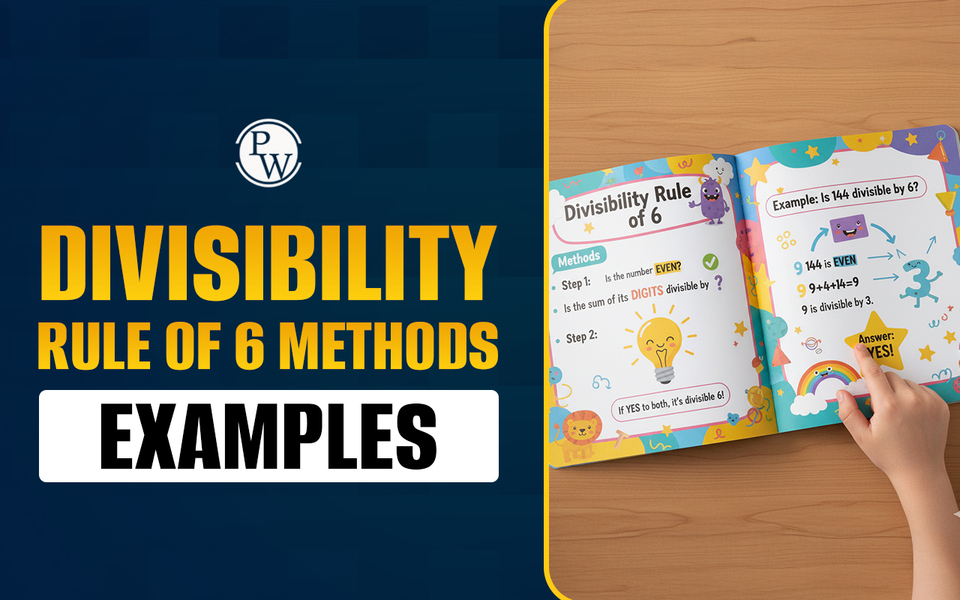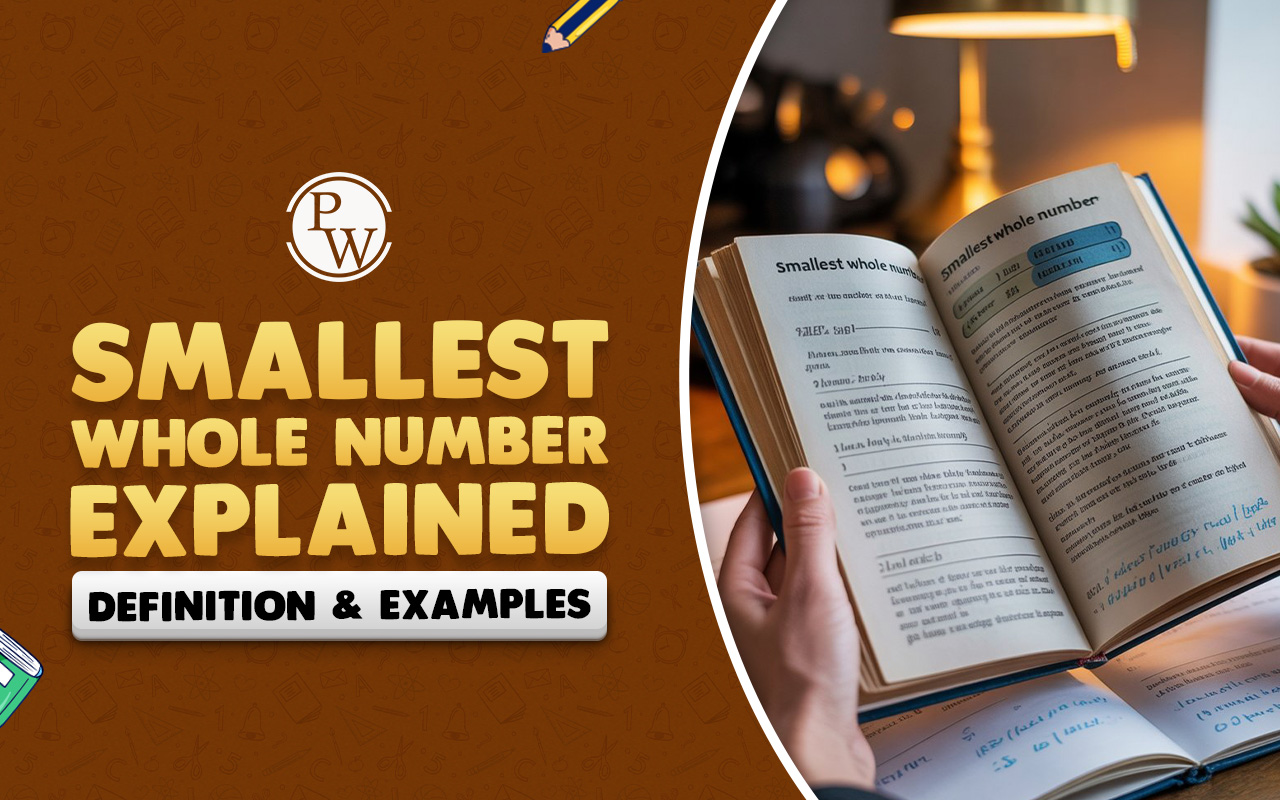
Divisibility Rule of 7 is a method in maths that helps us find out if a number can be divided by 7 without doing a lengthy division. When we divide, we generally look at the quotient and remainder. But with the divisibility test by 7, it becomes easy to tell whether the number is exactly divisible by 7 or not.
Learning the divisibility rule for 7 is very helpful while solving questions because dividing by 7 is not as simple as dividing by 2, 5, or 10. By using the divisibility rule for 7, we can check both small numbers and large numbers without using long steps. To learn more about the divisibility rule of 7 and how to use it, keep reading.
What are Divisibility Rules?
Divisibility rules are simple tricks in maths that help you check if one number can be divided by another number without doing the long division. Using the divisibility rules saves you time in exams or while solving tough questions in higher classes.
In Maths, there are divisibility rules for 2, 3, 5, 7, 10, and many more. By using these rules, you can quickly check if a number is a factor or multiple of another number. This is why divisibility rules are very important, especially while solving questions with large numbers.
Read More: What are Whole Numbers?
Divisibility Rule of 7 Definition
Divisibility rule of 7 works like a shortcut that helps you to check if a number can be divided by 7 without leaving any remainder. It is also called the divisibility test of 7. When you use the divisibility rule for 7, you do not need to use the long division method to do calculations.
As per the divisibility rule of 7, when you take the last digit of a number, multiply it by 2 or double it, and subtract it from the rest of the number, the answer should be 0 or a multiple of 7. This proves that numbers’ divisibility by 7. Moreover, the divisibility rule of 7 for large numbers makes your calculations very easy. So, whenever you want to know if a number can be divided by seven, you can simply find it by using the divisibility by 7 rule.
Also Read: Types of Line in Math
Divisibility Rule of 7 for Large Numbers
For small numbers, checking the divisibility rule of 7 is easy. But when you have a larger number, it becomes a bit tough to divide to find the answer. For such questions, you can use the divisibility test of 7 for large numbers again and again until you find the answer. Let's learn about the divisibility rule of 7 for large numbers step-by-step with an example:
Example: Solve 823347 using the divisibility rule of 7 for large numbers.
-
Step 1: Take the last digit, which is 7, and multiply it by 2: 7 × 2 = 14. Now subtract 14 from the rest of the number 82334: 82334 − 14 = 82320.
-
Step 2: Now take the last digit from 82320, which is 0. Double it or multiply it by 2: 0 × 2 = 0. Now, subtract 0 from 8232: 8232 − 0 = 8232.
-
Step 3: Take the last digit from the number 8232, which is 2. Multiply it by 2, like 2 × 2 = 4. Then subtract 4 from 823: 823 − 4 = 819.
-
Step 4: Take the last digit from 819, which is 9. Multiply it by 2: 9 × 2 = 18. Subtract 18 from 81: 81 − 18 = 63.
-
Now, check if the number 63 is a multiple of 7. So, by using the 7 divisibility rule, you can confirm that 823347 is divisible by 7.
This is how you can use the divisibility rule of 7 for large numbers to save time and improve accuracy during your exams.
Read More: Co-Prime Numbers
Divisibility Rule of 7 Examples with Solutions
To learn how to solve questions, go through these examples. The divisibility rule of 7 examples explains step-by-step solutions for both small and large numbers.
Example 1: Check if 91 is divisible by 7.
Solution:
-
The last digit of 91 is 1. Multiply it by 2, which gives 2.
-
Subtract 2 from the remaining part of the number, which is 9. So, 9 − 2 = 7.
-
7 is a multiple of 7. Therefore, 91 is divisible by 7.
Example 2: Check if 203 is divisible by 7.
Solution:
-
The last digit of 203 is 3. Multiply it by 2, which gives 6.
-
Subtract 6 from the remaining number, 20. So, 20 − 6 = 14.
-
14 is a multiple of 7. Therefore, 203 is divisible by 7.
Example 3: Check if 588 is divisible by 7.
Solution:
-
The last digit of 588 is 8. Multiply it by 2, which gives 16.
-
Subtract 16 from the remaining number, 58. So, 58 − 16 = 42.
-
42 is a multiple of 7. Therefore, 588 is divisible by 7.
Example 4: Check if 823347 is divisible by 7.
Solution:
-
Take the last digit 7 and multiply it by 2, which gives 14. Subtract 14 from the rest of the number, 82334. So, 82334 − 14 = 82320.
-
Take the last digit 0 and multiply it by 2, which gives 0. Subtract 0 from 8232 → 8232 − 0 = 8232.
-
Take the last digit 2 and multiply it by 2: 2 × 2 = 4. Subtract 4 from 823: 823 − 4 = 819.
-
Take the last digit 9 and multiply it by 2: 9 × 2 = 18. Subtract 18 from 81: 81 − 18 = 63.
-
63 is a multiple of 7. Therefore, 823347 is divisible by 7.
Example 5: Check if 1421 is divisible by 7.
Solution:
-
The last digit of 1421 is 1. Multiply it by 2: 1 × 2 = 2. Subtract 2 from the remaining number, 142: 142 − 2 = 140.
-
140 is a multiple of 7. Therefore, 1421 is divisible by 7.
Also read: Division of Fractions
Divisibility Rule of 7 and 11
Divisibility Rule of 7 and 11 helps you check if a number can be divided by 7 or 11 without leaving any remainder. For 7, take the last digit of the number, multiply it by 2, and subtract it from the rest of the number. If the result is 0 or a multiple of 7, the number is divisible by 7.
As per the divisibility rule of 11, add the digits in the odd positions and add the digits in the even positions. Then find the difference between these two sums. If the difference is 0 or a multiple of 11, the number is divisible by 11.
Divisibility Rule of 7 and 11 Example:
Let’s take the number 539 and apply the divisibility rule of 7 and 11 to check if it’s divisible by these numbers:
Step 1: Check divisibility by 7
-
Last digit = 9
-
Double it: 9 × 2 = 18
-
Remaining number = 53
-
Subtract: 53 − 18 = 35
-
35 is a multiple of 7, so 539 is divisible by 7.
Step 2: Check divisibility by 11
-
Add digits in odd positions: 5 and 9: 5 + 9 = 14
-
Digits in even positions: 3
-
Difference: 14 − 3 = 11
-
11 is a multiple of 11, so 539 is divisible by 11.
Therefore, 539 is divisible by both 7 and 11.
Divisibility Rule of 7 Practice Questions
Ques. Determine whether 266 is divisible by 7.
Ques. Check if 1,435 is divisible by 7.
Ques. Find out if 6,279 is divisible by 7 using the rule.
Ques. Check whether 2,547 is divisible by 7.
Ques. Use the divisibility rule for 7 to determine if 8,361 is divisible by 7.
Make Mental Math Easy and Fast for Your Child with CuriousJr
Have you noticed that your child is struggling to do simple math calculations in their mind? Even when they know the answer, taking too long can make them feel pressured or less confident. This slow speed can also affect their marks in exams, where quick calculation is important.
CuriousJr’s Mental Maths Online Classes are made to help your child solve math problems quickly and correctly using simple, fun tricks.
-
These online maths classes make learning enjoyable, so your child stays interested and motivated while improving their mental math skills.
-
The two-teacher model makes sure that your child gets personal attention and guidance at every step. One teacher focuses on teaching, while the other helps with practice and clears doubts even after classes.
-
You will also get regular updates on your child’s progress through meetings and performance reports, so you can see how they are improving day by day.
Book a demo class today and see how CuriousJr helps your child become faster, sharper, and more confident in mathematics.
Divisibility Rule of 7 FAQs
How can you check a given number's divisibility by 7?
Why do we use the divisibility rule of 7 in maths?
Are the divisibility rules of 7 and 11 the same?
How can we use the divisibility rule of 7 for large numbers?
How many numbers between 1 and 100 are divisible by 7?









